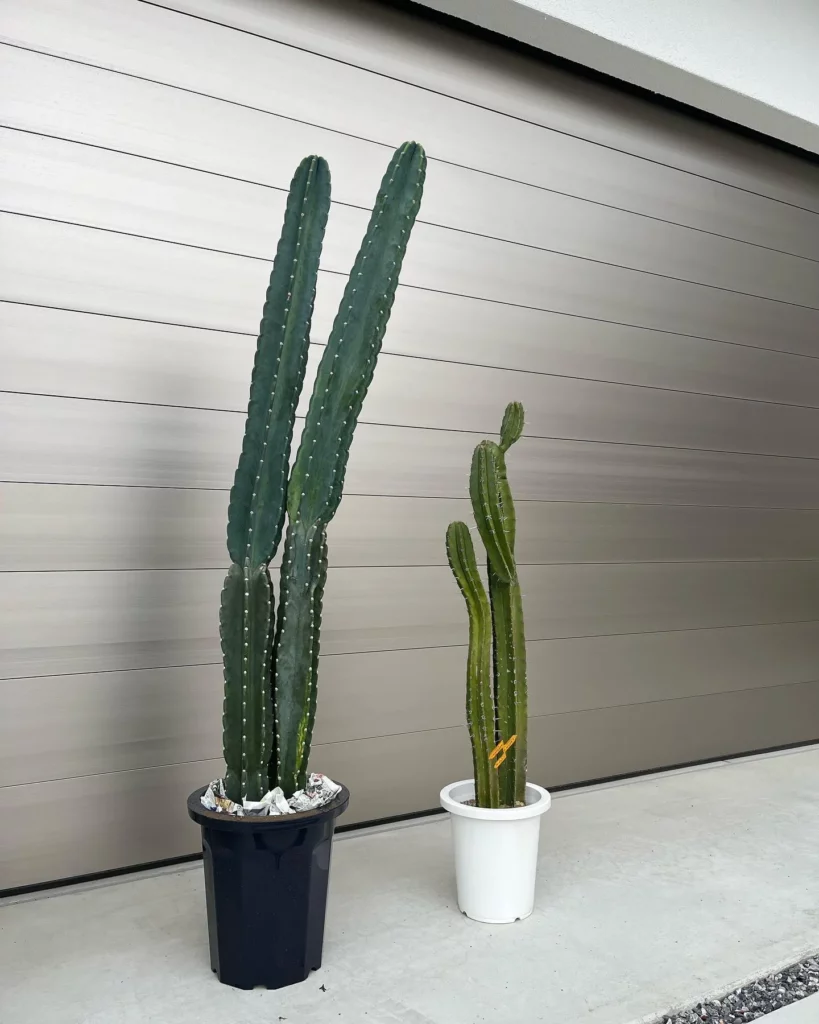The Easter Lily Cactus, scientifically known as Echinopsis subdenudata, is a visually stunning plant with unique characteristics. Its round shape, covered in tiny spines and fuzzy areoles, adds to its charm. The size of the cactus can vary, ranging from small, low-growing globular plants to large, branching, columnar specimens. Some hybrids even have thin, trailing stems and produce numerous offsets, while others prefer a solitary growth habit.
Key Takeaways:
- Easter Lily Cactus, also known as Echinopsis subdenudata, is a fast-growing cactus native to Mexico and South America.
- The cactus produces spectacular fragrant flowers that bloom around Easter.
- Easter Lily Cactus is easy to care for and can be grown in various settings, such as cactus gardens, rock gardens, and containers.
Appearance of the Easter Lily Cactus
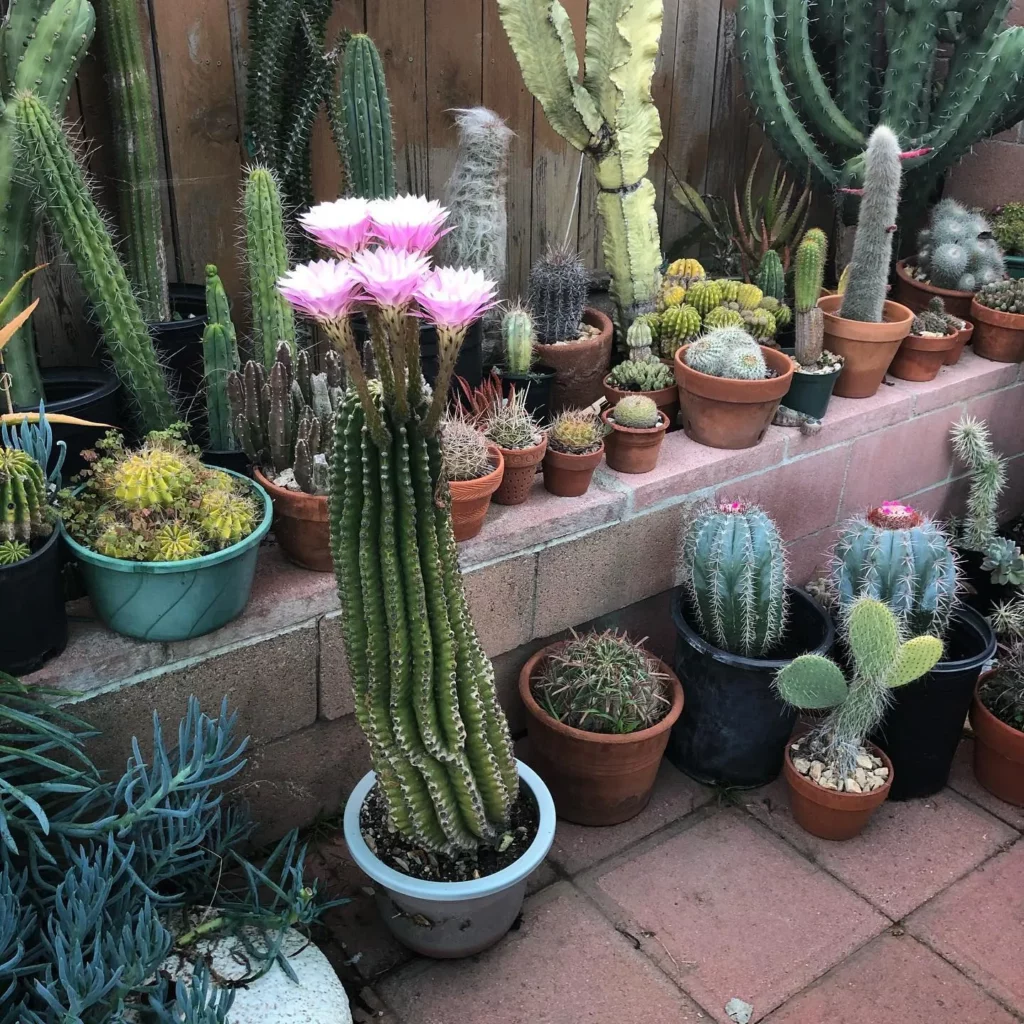


One of the highlights of the Easter Lily Cactus is its exquisite flowers. These flowers, which bloom in the springtime around Easter, come in a variety of beautiful colors including white, pink, yellow, and even multicolored variations. The fragrance emitted by these large, fragrant flowers adds an enchanting touch to any space where the cactus is displayed. It’s important to note that the flowers are nocturnal, closing up during daylight hours and reopening at night.
With its fascinating appearance and captivating blooms, the Easter Lily Cactus is a delightful addition to any indoor or outdoor garden. Its unique shape, variety of sizes, and stunning flowers make it a true standout among cacti.
No products found.
Easter Lily Cactus Light Requirements
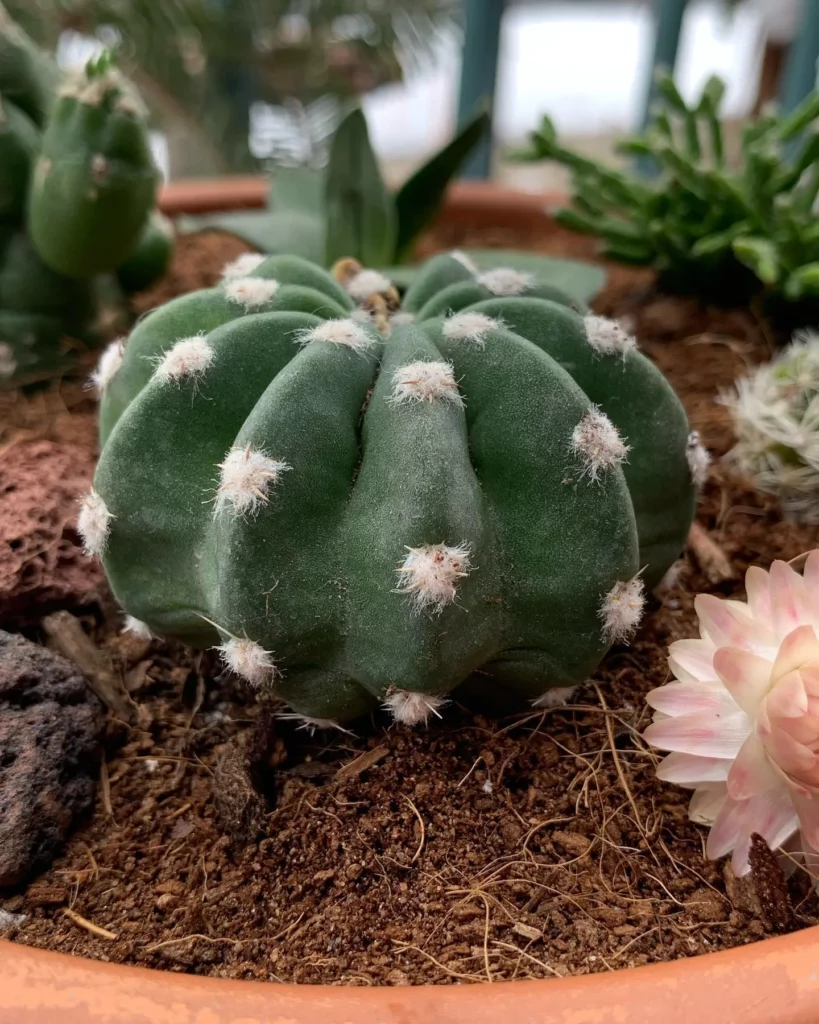

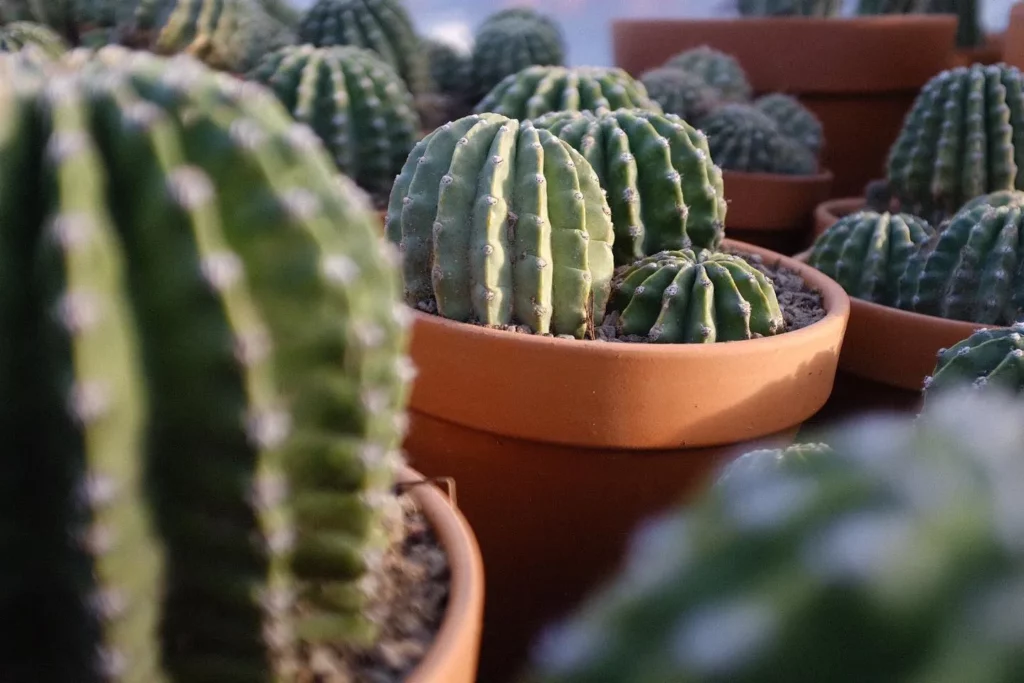
Proper lighting is essential for the health and growth of your Easter Lily Cactus. This cactus thrives in direct sunlight and enjoys spending the summer outdoors in the sunniest spot possible. It is best to place your Easter Lily Cactus in an area that naturally receives a lot of sun. The cactus can handle high and low temperatures well, but during the dormant winter months, it should be moved to a colder area, such as a garage, where it can receive indirect light.
It is important to note that the Easter Lily Cactus needs plenty of sunlight to grow and should not be placed in a dark spot. Lack of sunlight can lead to weak growth and a decreased chance of flowering. If you are growing your Easter Lily Cactus indoors, choose a sunny window with at least 4-6 hours of direct sunlight each day. Consider using a grow light to supplement natural light if needed.
- The Easter Lily Cactus prefers direct sunlight.
- Place it in the sunniest possible spot during the summer season.
- Move it to a colder area with indirect light during the dormant winter months.
- If growing indoors, choose a sunny window or use a grow light to supplement natural light.
Watering the Easter Lily Cactus
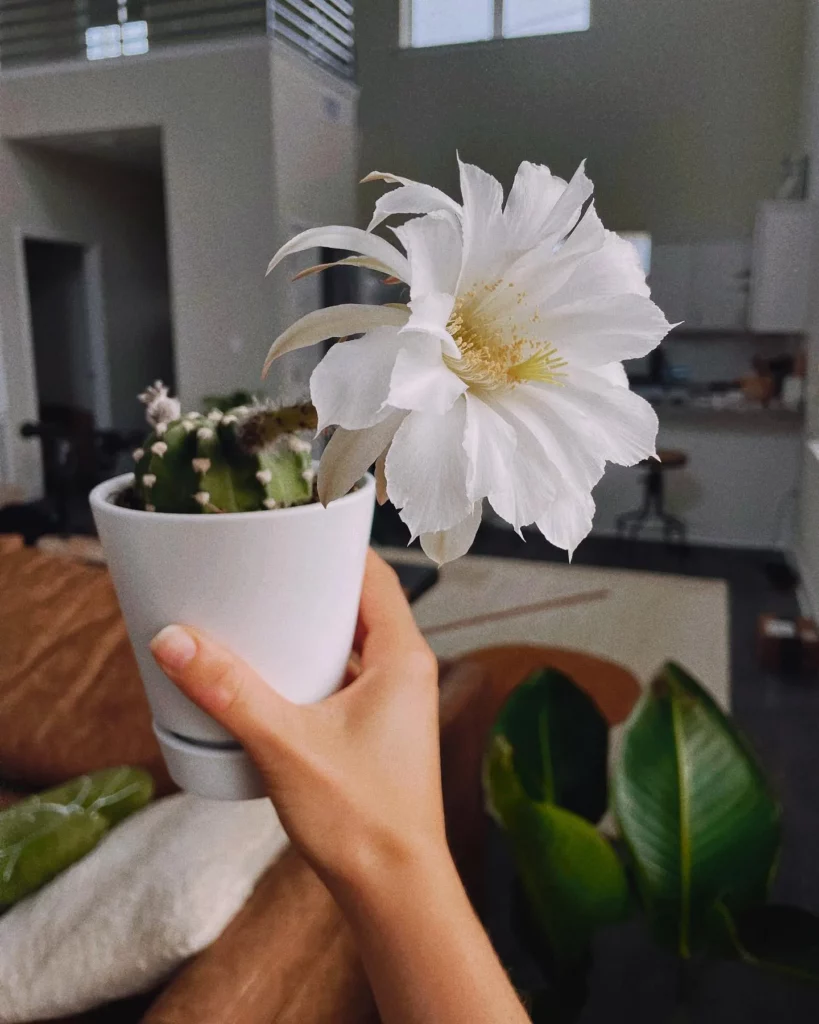
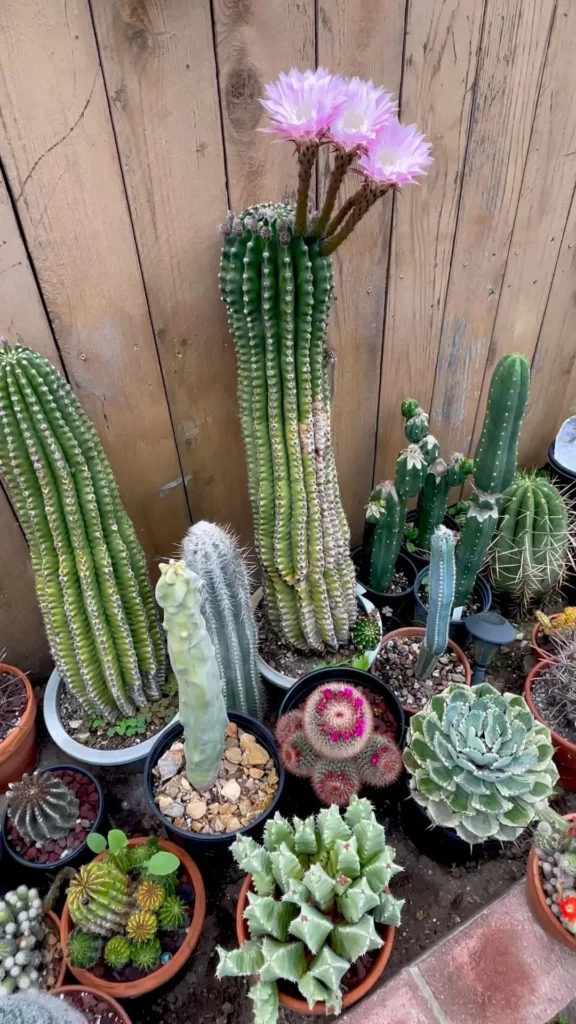
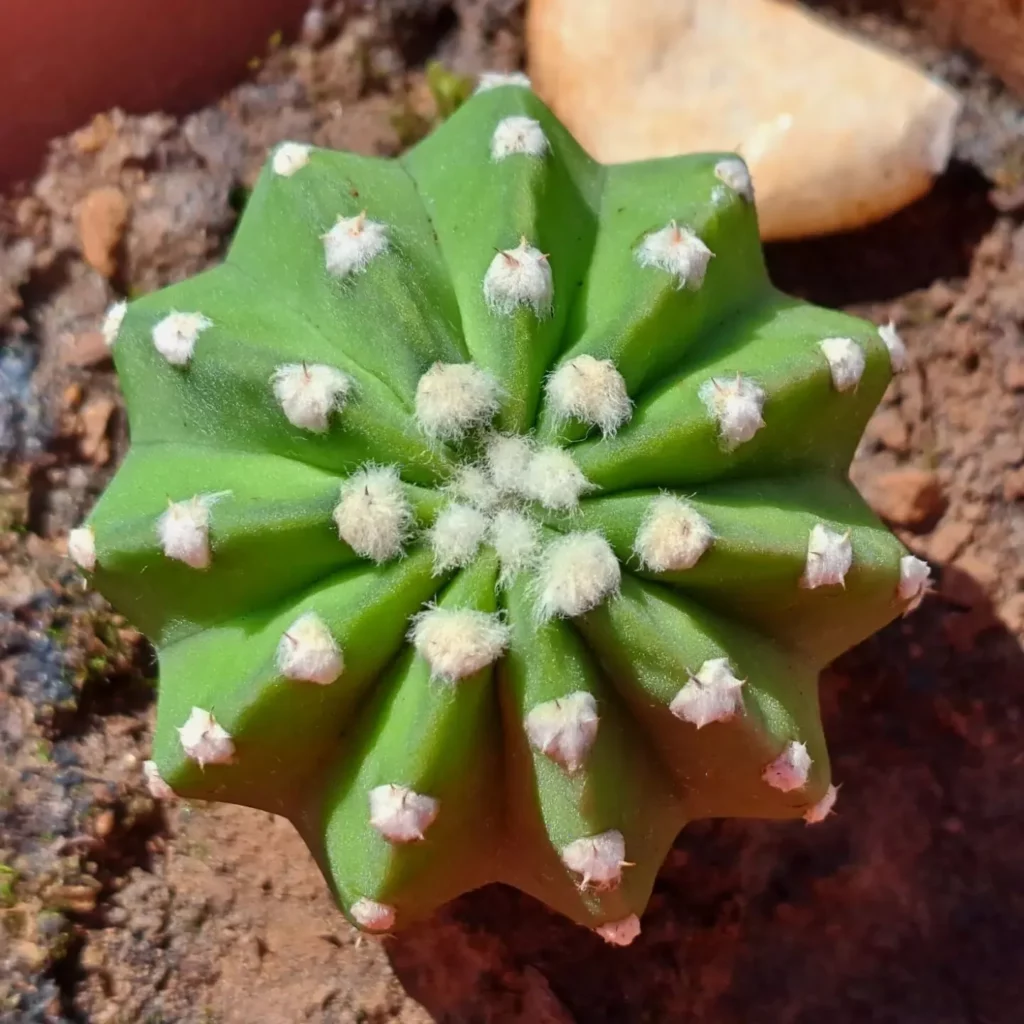
The watering needs of the Easter Lily Cactus are an essential aspect of its care. Proper watering practices will ensure the plant stays healthy and thrives. Here are some guidelines to follow:
- Summer Watering: During the active growing season, the Easter Lily Cactus should be watered regularly. Allow the soil to dry completely between waterings to prevent overwatering. This will help prevent root rot and other issues.
- Watering Frequency: The frequency of watering will depend on various factors such as the size of the pot, temperature, and humidity levels. As a general rule, water the cactus when the top inch of the soil feels dry. Use your finger or a moisture meter to check the moisture level.
- Watering Technique: To water the Easter Lily Cactus, thoroughly soak the soil until water drains out of the bottom of the pot. Ensure that the excess water is allowed to drain away completely, as standing water can lead to root rot. Avoid misting the plant as it prefers direct watering at the root level.
Signs of Overwatering and Underwatering
Properly monitoring the watering needs of the Easter Lily Cactus is crucial to prevent overwatering or underwatering. Here are some signs to look out for:
- Overwatering: If the cactus is overwatered, its leaves may appear swollen and yellow. The plant may also develop a soft, mushy texture or show signs of root rot. Additionally, the cactus may stop growing and become limp.
- Underwatering: When the Easter Lily Cactus is underwatered, its leaves may become wrinkled and appear dry. The plant may also show signs of wilting or drooping. Underwatered cacti may not grow as actively and may have a lackluster appearance.
Fertilizing the Easter Lily Cactus
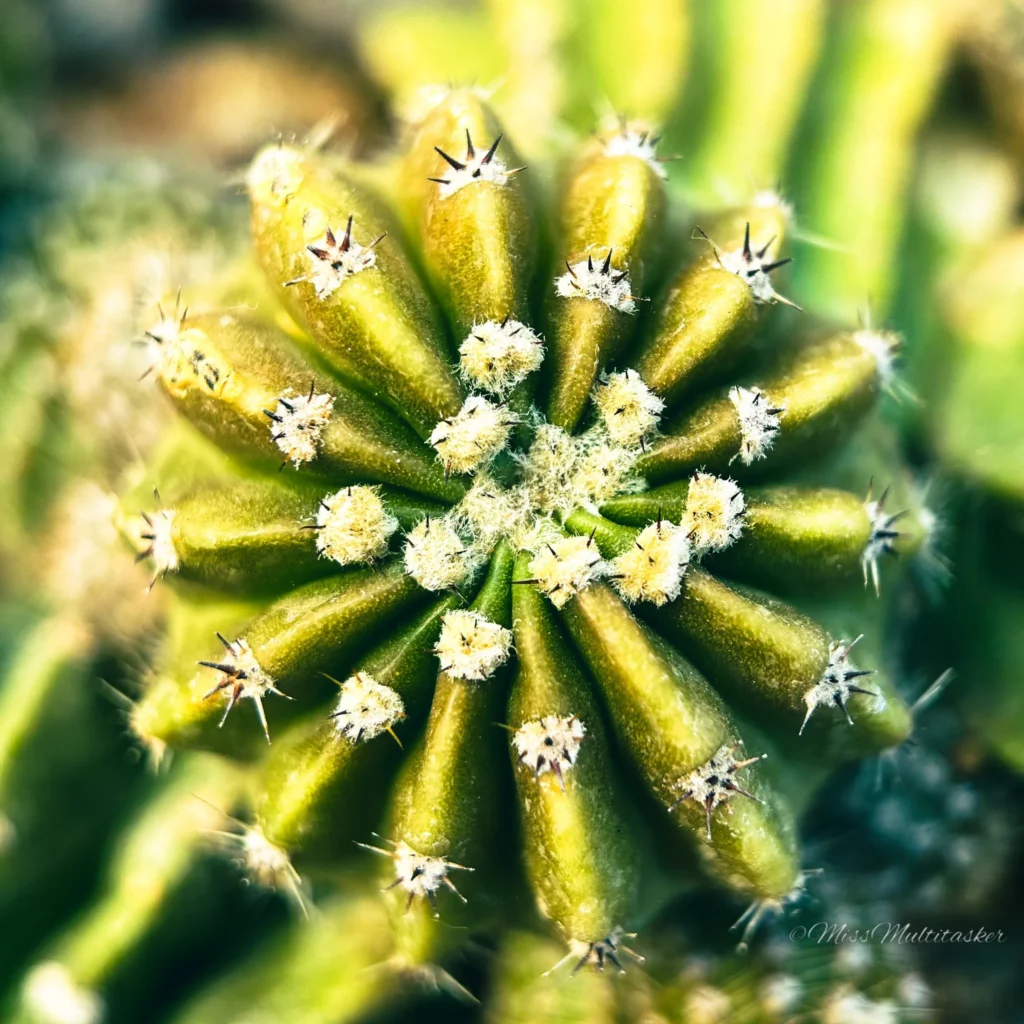
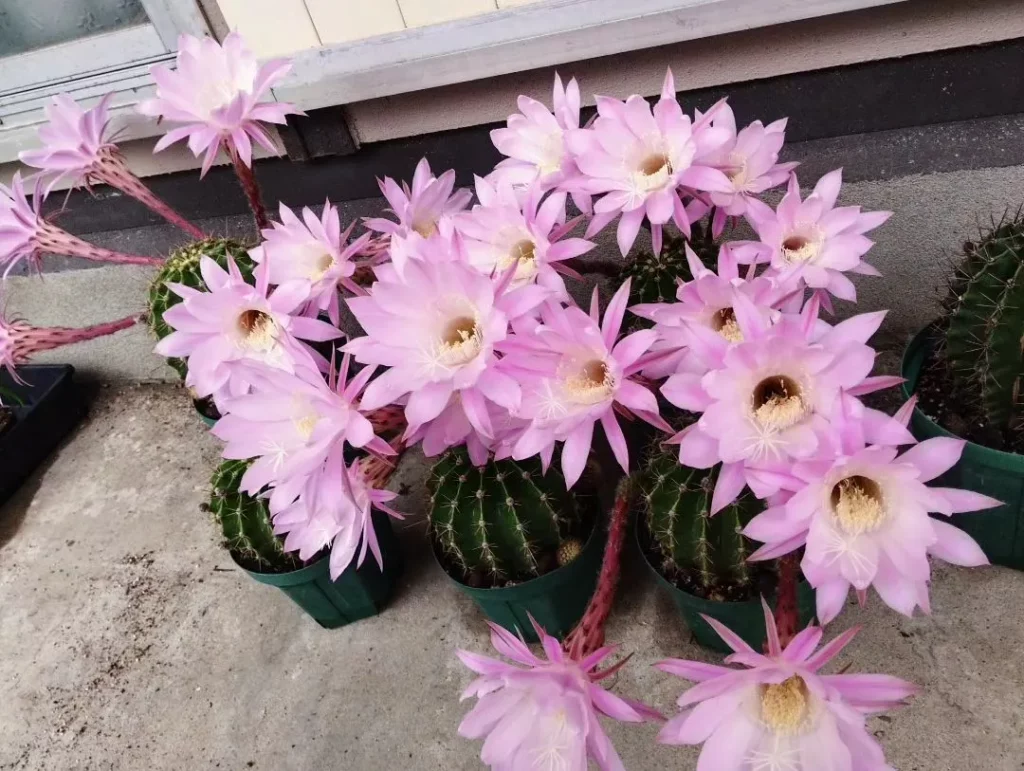
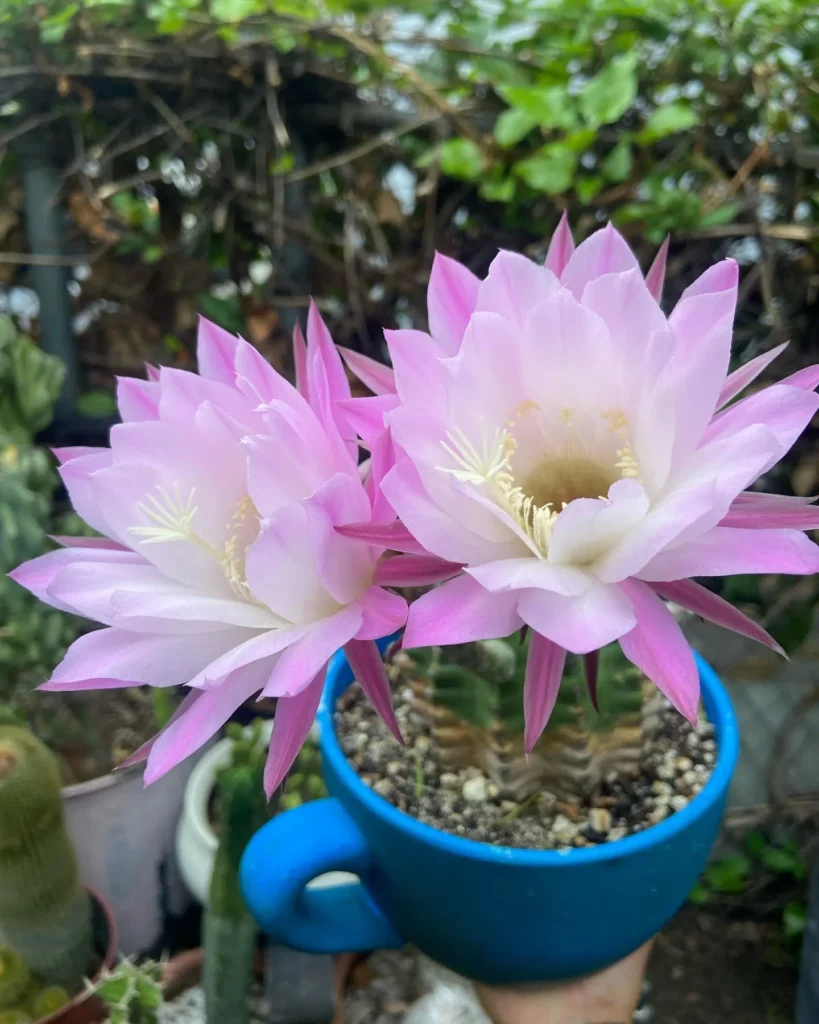
When it comes to fertilizing the Easter Lily Cactus, it’s important to provide it with the nutrients it needs for healthy growth and vibrant blooms. Fertilizing can help promote strong root development, encourage more flowers, and keep the plant looking lush and green.
There are various options for fertilizing the Easter Lily Cactus. Any normal cactus fertilizer should work fine, making it convenient to find one at your local garden center or plant store. Some sources recommend using a high-phosphorus or high-potassium fertilizer for optimal results. However, for general care, a regular cactus fertilizer is suitable and will provide the necessary nutrients for the plant’s growth.
When applying fertilizer, it’s crucial to follow the instructions on the packaging. Over-fertilizing can be harmful to the cactus, so it’s important not to exceed the recommended dosage. Fertilizing should be done during the growing season, typically in spring and summer when the plant is actively growing. As with any type of fertilizer, it’s essential to water after application to ensure the nutrients are properly absorbed by the roots.
Key Points for Fertilizing the Easter Lily Cactus:
- Choose a cactus fertilizer or a regular fertilizer suitable for cacti.
- Follow the instructions on the packaging to avoid over-fertilizing.
- Apply fertilizer during the growing season, usually in spring and summer.
- Water the plant after fertilizing to aid nutrient absorption.
The Importance of Proper Potting for Easter Lily Cactus
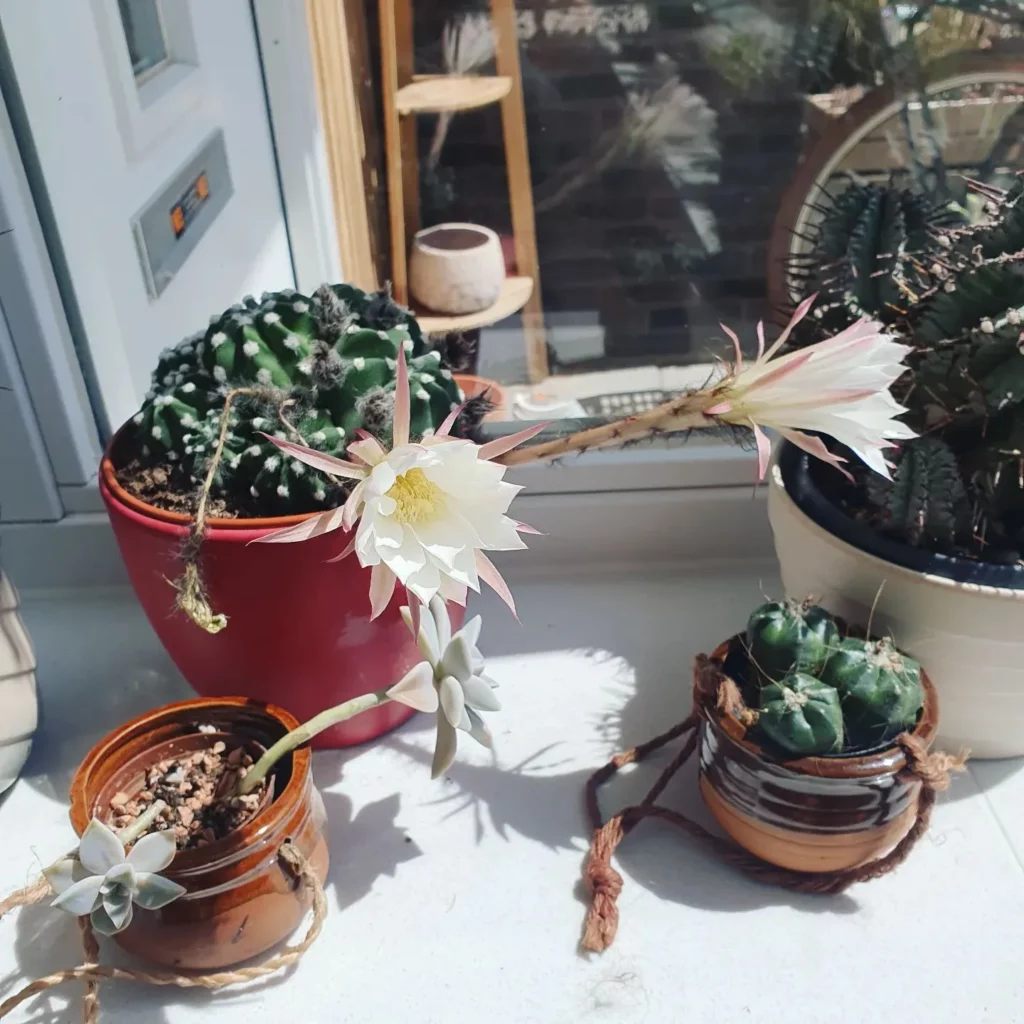
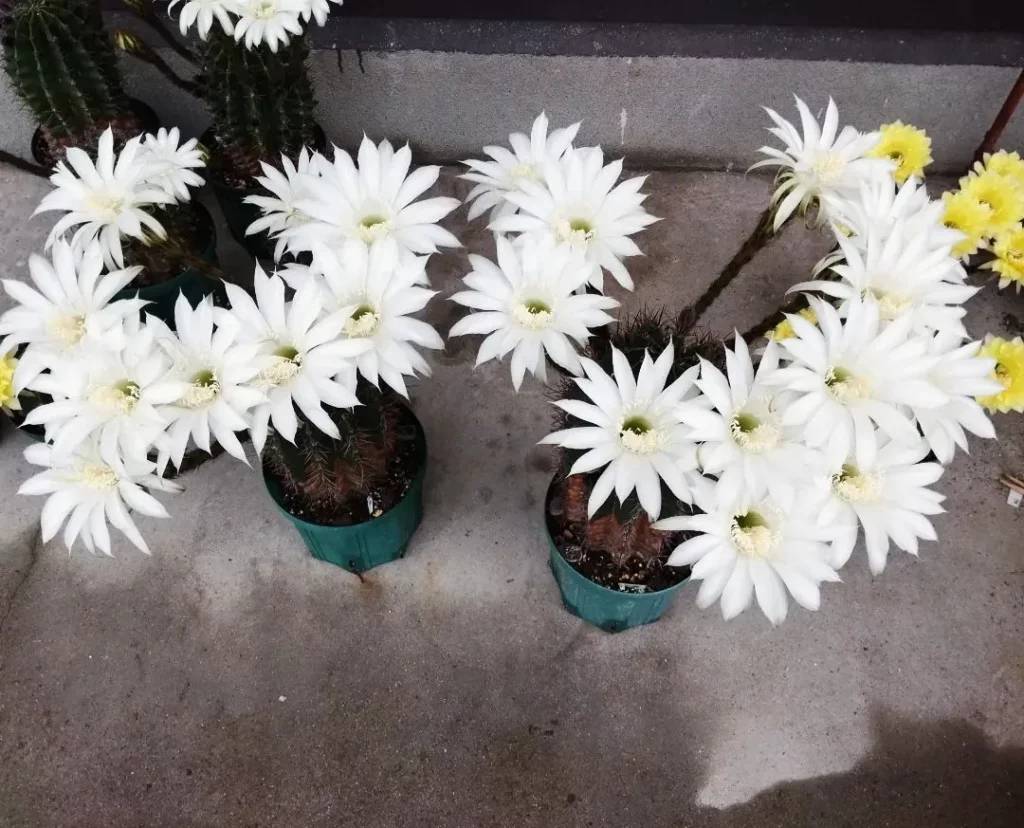
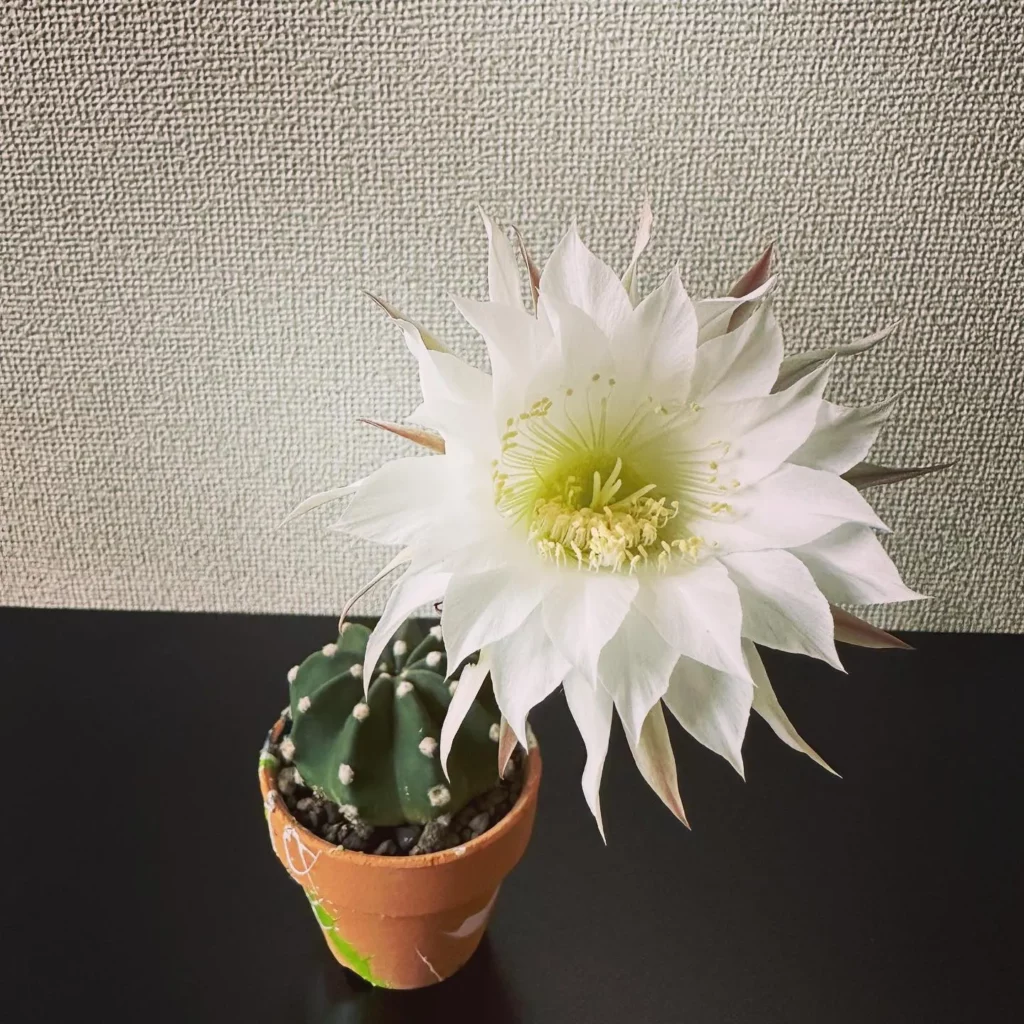
Proper potting is essential for the optimal growth and health of your Easter Lily Cactus. Choosing the right pot and soil mixture is crucial to ensure the plant’s roots have adequate drainage and space to thrive. Here are some key points to consider when potting your Easter Lily Cactus:
1. Selecting the Right Pot
When choosing a pot for your Easter Lily Cactus, opt for a terracotta pot with drainage holes. Terracotta pots allow for better airflow and water evaporation, preventing the roots from sitting in excess moisture. The pot should be slightly larger than the current size of the plant, providing room for growth but not too big to retain excess water.
2. Choosing the Ideal Soil Mixture
The soil mixture plays a vital role in preventing root and stem rot. For Easter Lily Cactus, it’s best to use a well-draining soil mix. A mixture of potting soil, perlite, pumice, and sand with a large grain size is recommended. This combination creates a light and airy substrate that allows water to flow through easily while providing essential nutrients to the plant.
3. Potting with Care
When potting your Easter Lily Cactus, handle the plant with caution to avoid damaging its delicate roots. Gently remove the cactus from its current pot, carefully loosening any compacted soil around the roots. Place the cactus in the new pot, ensuring that the roots are spread out and not cramped. Fill the remaining space with the soil mixture, gently patting it down to secure the plant. Avoid compacting the soil too tightly, as it can hinder drainage.
Propagating the Easter Lily Cactus
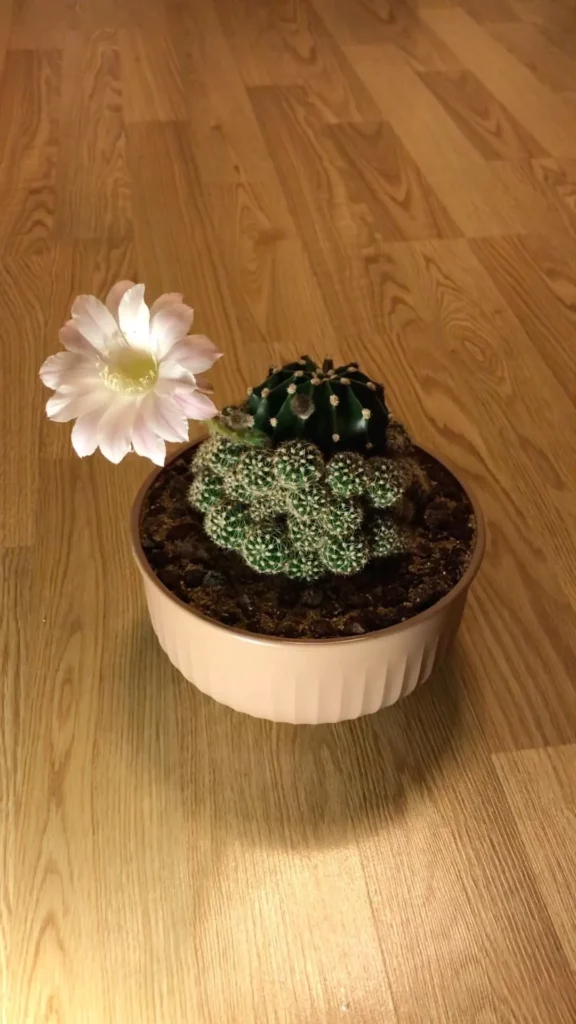


Propagating the Easter Lily Cactus, also known as Echinopsis subdenudata, is a rewarding process that allows you to expand your collection or share this beautiful cactus with others. There are two main methods of propagation: by removing and replanting offsets or pups, or by growing from seeds. Both methods have their advantages and can be successful with proper care and attention.
Taking offsets or pups
Easter Lily Cacti often produce offsets or pups, which are smaller plants that grow from the base of the main plant. To propagate using this method, carefully remove the offset or pup from the main plant using a clean, sharp knife or scissors. Allow the cut end to callus, or dry out, for a few days to prevent rotting.
Once the offset or pup has callused, plant it in a well-draining soil mixture, similar to the one used for the parent plant. Make sure the pot has drainage holes to prevent waterlogged soil. Place the planted offset in a location with bright, indirect sunlight, and water sparingly until new roots develop.
Growing from seeds
If you have the patience and want to experience the full growth cycle of the Easter Lily Cactus, you can propagate it from seeds. Start by collecting fresh seeds from mature, open flowers. Sow the seeds in a pot filled with a well-draining soil mixture, lightly covering them with a thin layer of soil.
Place the pot in a warm, bright location, preferably with some indirect sunlight. Keep the soil moist but not overly wet, as excessive moisture can cause the seeds to rot. With proper care, the seeds will germinate within a few weeks, and you can watch as your new Easter Lily Cactus plants begin to grow.
Growth and Development of the Easter Lily Cactus
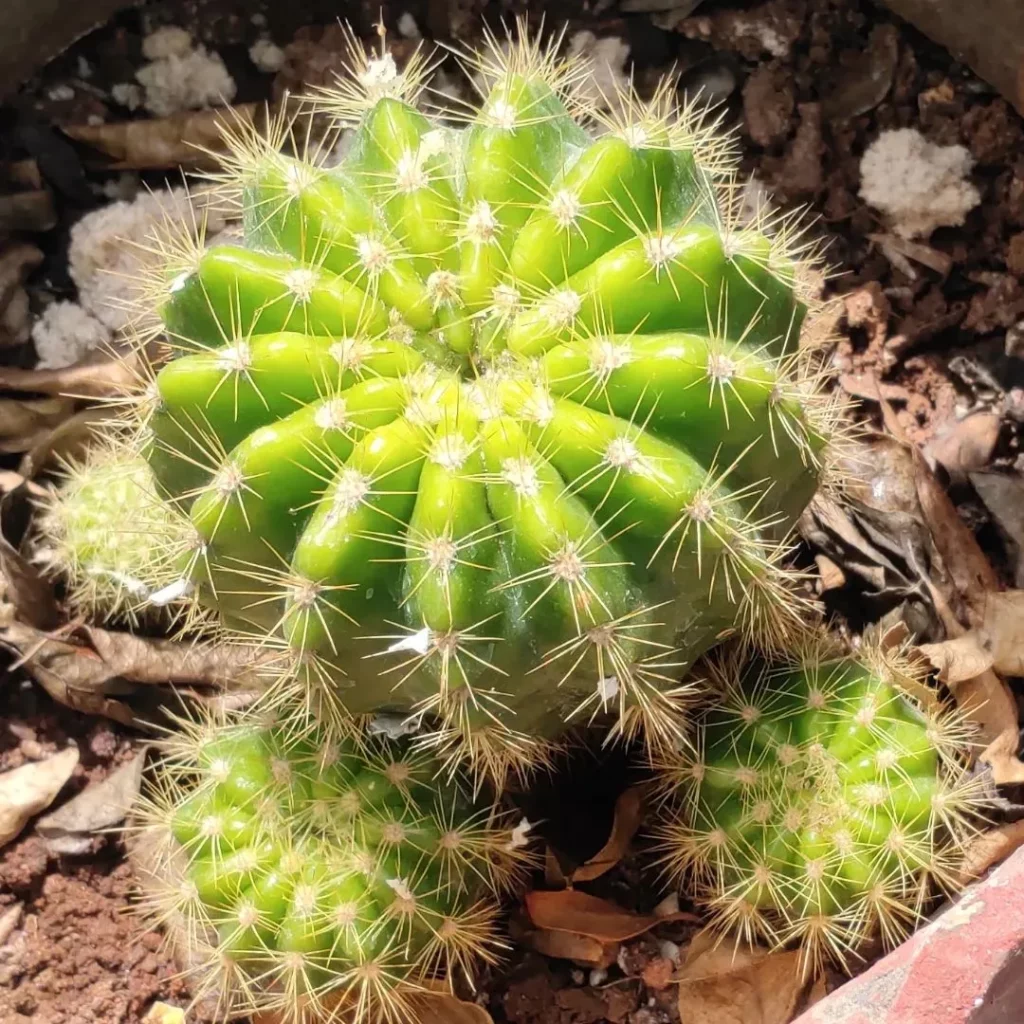
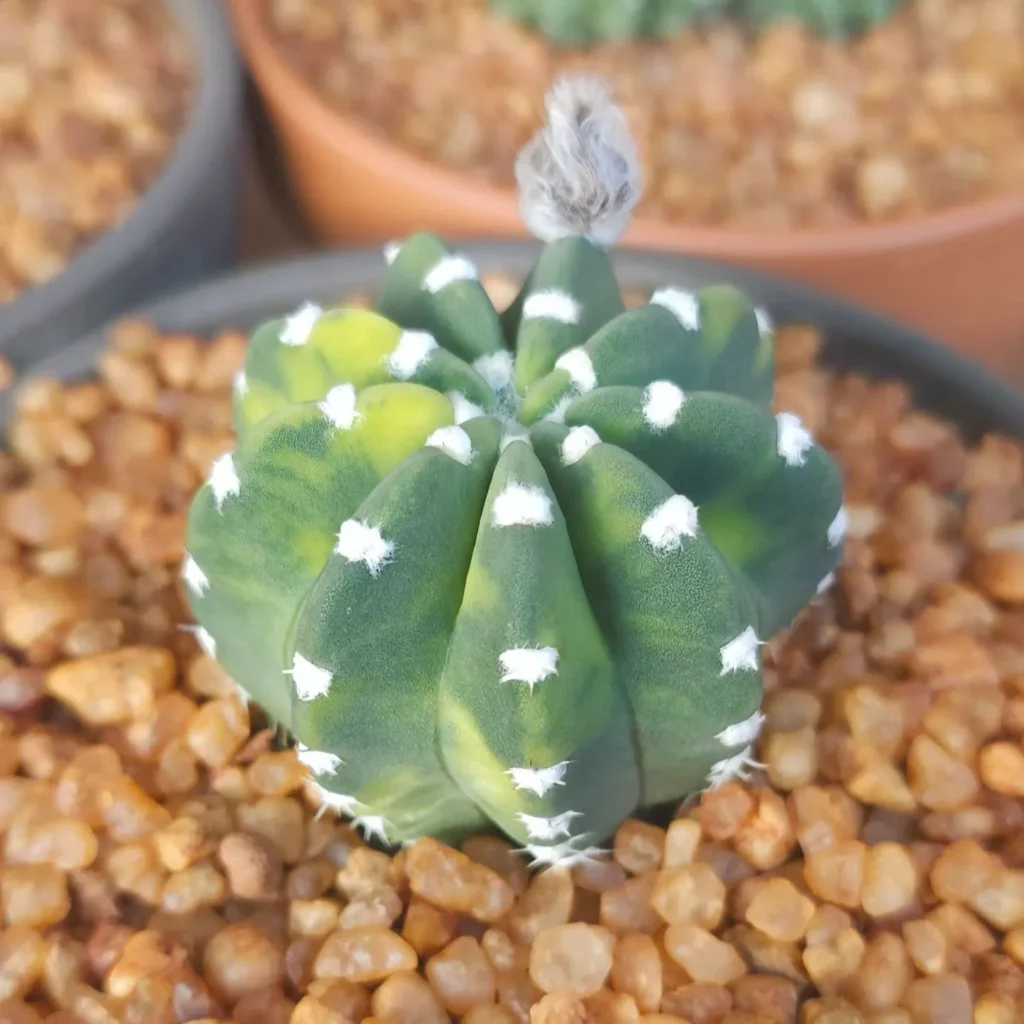
The Easter Lily Cactus is a fascinating plant that can grow and develop quickly under the right conditions. With its round shape, tiny spines, and fuzzy areoles, it adds a unique touch to any garden or indoor space. One of the most remarkable features of the Easter Lily Cactus is its large, fragrant flowers that bloom in various colors, including white, pink, yellow, and multicolored varieties.
When properly cared for, the Easter Lily Cactus can produce flowers within four years if planted from seed. The flowers are so large that they sometimes dwarf the plant itself, creating a stunning visual display. With its hardiness to temperatures between fifteen to twenty degrees Fahrenheit and its ability to withstand drought conditions, the Easter Lily Cactus is a resilient and adaptable plant that can thrive in various environments.
Growing Tips for the Easter Lily Cactus
- Provide direct sunlight: The Easter Lily Cactus thrives in areas with plenty of sunlight. Ensure it has access to direct sunlight during the summer months to promote healthy growth.
- Water sparingly: While the Easter Lily Cactus requires regular watering during the summer growing season, it’s important not to overwater. Allow the soil to dry completely between waterings to prevent root rot.
- Fertilize during the growing season: Give your Easter Lily Cactus a boost by fertilizing it with a cactus fertilizer during the growing season. Follow the instructions on the fertilizer packaging for the best results.
- Choose well-draining soil: Plant your Easter Lily Cactus in a mixture of well-draining soil, perlite, pumice, and sand. This will prevent root and stem rot and ensure optimal growth.
- Propagate with offsets: Expand your Easter Lily Cactus collection by propagating it with offsets. Simply remove the offsets or pups that develop on the main plant, let them callus for a few days, and plant them in the same well-draining soil mixture.
Pests and Diseases of the Easter Lily Cactus
The Easter Lily Cactus is generally a hardy plant and not prone to many pests or diseases. However, there are a few issues that you may encounter when caring for this cactus. Here are some common pests and diseases to be aware of:
Pests:
- Mealybugs: These small, white insects can infest the Easter Lily Cactus, leaving a cotton-like substance on the plant. To remove them, gently wipe the affected areas with a cotton swab dipped in rubbing alcohol.
- Scale insects: These pests appear as small, oval-shaped bumps on the cactus. They can be removed by scrubbing the affected areas with a soft brush dipped in soapy water.
Diseases:
- Root rot: Overwatering can cause the roots of the Easter Lily Cactus to rot, leading to wilting and a decline in overall health. To prevent root rot, ensure that the soil is well-draining, and avoid overwatering the plant.
Underwatering and Overwatering the Easter Lily Cactus
Proper watering is essential for the health and well-being of the Easter Lily Cactus, as both underwatering and overwatering can have negative effects on the plant. It’s important to find the right balance and provide the cactus with the appropriate amount of water to thrive.
Signs of Underwatering
- Wrinkled or shriveled appearance
- Slow growth or lack of new growth
- Dull, lackluster color
- Leaves or segments becoming thin and flat
- The soil dries out quickly after watering
If you notice any of these signs, your Easter Lily Cactus may be underwatered. To remedy this, thoroughly water the plant until the soil is moist. Allow the excess water to drain out of the pot to prevent waterlogged roots, and then let the soil dry out completely before watering again.
Signs of Overwatering
- Yellowing or browning of the segments or leaves
- Soft, mushy segments or stems
- Foul odor coming from the soil
- The soil remains wet for an extended period
- Signs of root rot, such as black or brown roots
If you suspect overwatering, it’s crucial to act promptly. Remove the Easter Lily Cactus from its pot and inspect the roots for any signs of rot. Trim away any affected areas and replant the cactus in fresh, well-draining soil. Adjust your watering routine to allow the soil to dry out completely before watering again, and be mindful of not overwatering in the future.
Where to Find Easter Lily Cacti
If you’re looking to add a touch of beauty and uniqueness to your plant collection, the Easter Lily Cactus is a fantastic choice. You can easily find these stunning cacti at local plant stores, garden centers, or specialized cactus nurseries.
Whether you prefer to shop in-person or online, there are plenty of options for purchasing Easter Lily Cacti. Local plant stores often have a variety of cacti available, and you may even find some expert advice on caring for them. Garden centers are also great places to explore and discover these eye-catching plants.
If you can’t find Easter Lily Cacti locally, don’t worry! There are numerous online sources where you can buy them. Many reputable websites offer a wide range of cacti, making it easy to find exactly what you’re looking for. Just remember to check the seller’s reputation and reviews before making a purchase.
When you bring your Easter Lily Cactus home, be sure to handle it with care. The cactus has tiny spikes that can cause discomfort if touched, so it’s always a good idea to wear gloves or use a soft cloth when handling it. Additionally, while there is no specific information on the toxicity of Echinopsis subdenudata, it’s best to keep it out of reach of curious pets and children.
FAQ
What is the Easter Lily Cactus?
The Easter Lily Cactus, also known as Echinopsis subdenudata, is a fast-growing group of cacti native to Mexico and South America.
How big do Easter Lily Cacti grow?
Easter Lily Cacti can vary in size from small, low-growing globular plants to large, branching, columnar specimens.
When do Easter Lily Cacti bloom?
The Easter Lily Cactus produces spectacular fragrant flowers that bloom in the springtime, around Easter.
Where can I grow the Easter Lily Cactus?
The Easter Lily Cactus can be grown in cactus and rock gardens, along pathways, as understory plants with filtered shade, or in containers.
How should I care for the Easter Lily Cactus during the summer?
The Easter Lily Cactus requires minimal irrigation during the hot summer season and prefers direct sunlight.
What kind of soil should I use for potting the Easter Lily Cactus?
The Easter Lily Cactus should be planted in well-draining soil, such as a mixture of potting soil, perlite, pumice, and sand with a large grain size.
How can I propagate the Easter Lily Cactus?
The Easter Lily Cactus can be propagated by removing and replanting offsets or pups that develop on the main plant.
How long does it take for the Easter Lily Cactus to produce flowers?
It can take up to four years for the Easter Lily Cactus to produce flowers if planted from seed.
Are Easter Lily Cacti prone to pests and diseases?
While generally not prone to many pests or diseases, the Easter Lily Cactus can be affected by root rot if overwatered and can be susceptible to mealybugs and scale insects.
What should I do if my Easter Lily Cactus is underwatered or overwatered?
If underwatered, the Easter Lily Cactus should be given plenty of water to rehydrate the plant. If overwatered, the plant should be removed from its pot, the roots checked for rot, and replanted in fresh, well-draining soil if possible.
Where can I find Easter Lily Cacti?
Easter Lily Cacti, including Echinopsis subdenudata, can be found at local plant stores, garden centers, or cactus nurseries, and can also be purchased online.

